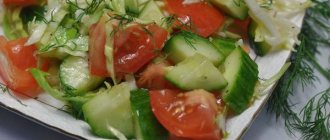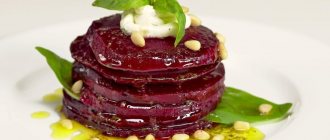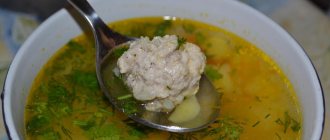Properties of gherkins
Nutritional value and composition | Vitamins | Minerals
How much do gherkins cost (average price for 1 kg)?
Moscow and Moscow region.
85 rub.
Gherkins are not only unusually attractive vegetables, but also very tasty fruits that can be used for culinary purposes in the same way as traditional cucumbers. By the way, gherkin (from the French cornichon) is the name of some groups of plants of small-fruited varieties of the species Cucumis sativus L. or Cucumber. The gherkins are picked before they are fully ripe and then used for preservation, usually using the pickling method.
Traditionally, the length of gherkins hardly exceeds four centimeters. But if you come across a fruit larger than 8 centimeters, it means that it is no longer a gherkin, but an ordinary cucumber. By the way, the term gherkins is quite often applied to the fruits of ordinary varieties of ordinary cucumber, which are removed soon after the end of flowering, which is considered incorrect.
Often, any pickled cucumbers of miniature size are called gherkins, which is again incorrect. Producers of agricultural crops can also use the concept of gherkins simply to refer to high-quality fruits of the cucumber plant, which are intended for pickling and pickling. By the way, in the 19th century it was usually customary to use a slightly different spelling of this word - cornichot.
Be that as it may, gherkins are very tasty vegetables, which in their gastronomic qualities are not only not inferior to ordinary cucumbers, but even to some extent superior to them. The attractive appearance, miniature size, juiciness, dense texture, crunchiness and low calorie content of gherkins make it possible to use these fruits in the preparation of a huge number of different dishes.
In addition to the excellent taste characteristics, the beneficial properties of gherkins are also highly valued. For example, the calorie content of gherkins is very low - only 28.2 kcal per hundred grams. At the same time, small fruits are easily digested by the body and at the same time fill it with numerous vitamins and minerals. This allows the fruits to be used in dietary nutrition.
It has been proven that regular consumption of gherkins improves digestion, triggers the production of gastric juice, and also cleanses the intestines of accumulated harmful substances. In addition, if you include gherkins in your regular diet, fat metabolism will significantly improve and, as a result, you can easily lose weight.
The possible harm of gherkins, particularly when pickled, cannot be denied. It is strongly not recommended to use this product if you have diseases such as gastritis and peptic ulcers, as well as in case of personal intolerance. This is not due to the distinctive properties of the gherkins themselves, but to the fact that vinegar is present in the product.
Composition and benefits
Gherkins, like any cucumbers, consist of 95% water, therefore they are considered low-calorie and easily digestible vegetables. Due to this property, such miniature vegetables can often be found in various diets. Small cucumbers contain many useful vitamins and microelements: potassium, zinc, magnesium, phosphorus, iron, iodine, vitamins C, PP and B.
Curious! With regular consumption of gherkins, digestion improves, cholesterol levels normalize, immunity increases, metabolism in the body accelerates, and the large amount of fiber in the composition helps cleanse the intestines.
What is a gherkin chicken
There are two versions regarding the origin of the name of these miniature chickens:
- The name comes from the French word cornichon, which refers to small-fruited cucumbers. The name focuses on the small size of the chicken carcass. The weight of a gherkin chicken is only 350–600 g, while a regular broiler weighs 2.2–2.5 kg. One medium-sized frying pan fits three gherkin chickens at once.
- The name comes from the phrase Cornish hen, which literally means Cornish chicken.
How do gherkin birds appear on supermarket shelves? They are mainly supplied by poultry farms. The period of growing a broiler is 39–42 days.
At first, poultry farms sold unfinished chickens due to forced slaughter. But given the interest of buyers in the product, a new direction has emerged - the deliberate supply of mini-chickens, which were served as a premium product. They cost more than conventional boilers.
We suggest you read: Marinating crispy gherkins for the winter
You can buy such a chicken from farmers. They are grown on pasture, so farm gherkins are not so fatty and have different taste properties. Unlike soupy farm chickens, they are more tender.
It is worth considering that the gherkin carcass, despite its miniature size, can be large for one serving, and sauces will add calories. If you prefer serving portioned, you can serve these chickens in halves. But many guests will not refuse a whole gherkin weighing 350–400 g. You can also place the carcasses on a common dish: they will look simply luxurious.
What are gherkin chickens?
Gherkin chickens are young animals weighing 350-500 g. There are two versions of the origin of the name: from the Cornish breed and comparison with small cucumbers.
Poultry farms were the first to supply gherkins. That's what they called broiler chicks. If the young animals at the enterprise grew slowly, they were slaughtered earlier. Usually already in a month and a half.
The manufacturer tried to sell small carcasses so as not to lose profit. But he didn’t put his hopes on them. Suddenly there was a demand for such chickens. Buyers loved the tender, juicy meat. Therefore, it was decided to put the production of gherkins on stream.
Over time, this experience was adopted by small companies that raised chickens. But private breeders have made adjustments to the production of such chickens.
On poultry farms, chickens sit in cages and eat feed with special additives for rapid growth. They are often fed antibiotics. Private farms began to take broiler chicks out into the walking yard so that they could eat fresh grass and bask in the sun. We also revised our diet. The gherkins are given food without synthetic additives.
As a result, after slaughter, such chickens are distinguished by nutritious meat with high taste characteristics. Today, gherkins are grown en masse by poultry farms and private farmers.
Such chickens are not a dietary product. Their calorie content is 140 calories per 100 g. Gherkins are considered a delicacy due to their tender and juicy meat. They have a low fat content, so the product can even be used in children's menus.
Food-list
Pickled gherkins are small, beautiful cucumbers that have recently become an integral part of our holiday and everyday diet. The French word cornichon is the collective name for several varieties of a plant called Cucumber.
Gherkins differ from ordinary cucumbers primarily in size. The length of an average cucumber, which you will see in a jar with pickled gherkins, does not exceed 8 cm. Often, all unripe cucumber fruits (picked immediately after flowering) are classified as gherkins. This is completely untrue; ordinary cucumbers, even small ones, cannot compare in their taste with pickled gherkins.
Real gherkins are high-quality fruits of a separate plant variety, which are distinguished by their delicate taste and special aroma. Pickled gherkins are used as a separate side dish for meat and fish dishes. So cucumbers are ingredients in some sauce recipes. For example, finely chopped pickled gherkins are added to Tartar fish sauce.
An ordinary vinaigrette will take on a new taste if you add pickled gherkins to it. A sauce based on mayonnaise with capers and pickled gherkins will be an unusual and tasty addition to meat and fish dishes. On store shelves you can easily find an unprecedented variety of pickled gherkins. However, is such a product always useful?
Often, when you purchase gherkins, you get regular pickled cucumbers, only smaller in size. Manufacturers often add various food additives, flavor enhancers and preservatives to canned foods. Such substances have a harmful effect on human health. Meanwhile, gherkins are considered a fairly healthy product, which contains a large amount of vitamin PP, iodine, phosphorus, as well as calcium and iron.
During conservation, of course, some of the nutrients are lost. However, homemade pickled gherkins still remain a healthier and more natural alternative to the store-bought product. We suggest adopting a simple recipe for preparing pickled gherkins so that you can please your family and friends with homemade vegetable preparation.
So, you will need: a kilogram of gherkins, a couple of medium onions, red pepper (250 gr.), celery, parsley, dill (40 gr.), garlic, vinegar (500 ml.), salt and sugar, as well as black pepper. First of all, you need to wash the gherkins well and fill them with water for about 10 minutes. During this time, cut the greens, onions and horseradish and put them on the bottom of pre-sterilized jars, then put the cucumbers there. For the marinade, you need to bring water to a boil, adding salt, pepper, sugar, and vinegar. At the final stage, you need to fill the jars with marinade and cover with lids.
Canning miniature cucumbers for the winter
There are many recipes for pickling gherkins for long-term storage. To choose one or more suitable options, you definitely need to try them out. It is best to prepare such a snack in small jars. This is practical, and the harvested crop can be processed at any time, rather than waiting until there are enough vegetables to fill a large container.
Despite the enormous popularity among lovers of pickled cucumbers, this product also has its contraindications. It is strictly prohibited for people with gastrointestinal problems.
. The acetic acid contained in the marinade can cause an exacerbation of the disease.
The classic way to prepare greens
A homemade recipe for pickled gherkins makes this product not only tasty, but also healthy. The cucumbers turn out almost lightly salted, and the acid is not felt at all. Picked and washed fruits must be soaked in ice water for 6-7 hours. While the cucumbers are being prepared, you can prepare clean containers and marinade. To do this you need to take for one liter container:
Place all ingredients for brine in cold water and put on fire. The liquid should boil for 5-7 minutes. Place cucumbers ready for pickling in a jar and pour boiling water over them. This procedure must be done at least twice. The vegetables will warm up well, and the jars of cucumbers will not need to be sterilized. Then pour the marinade into each prepared container and seal it with lids.
Mini pickles with spicy spices
Recipes for miniature cucumbers are not much different from preparing zucchini, squash or regular cucumbers. The presence of spicy spices in the marinade makes this product piquant and spicy.
, which allows him to be a welcome guest on any table.
Required ingredients:
If the vegetable is freshly picked, then it does not need to be soaked in cold water. Simply wash thoroughly. If more than a day has passed since harvesting, then the soaking procedure must be done.
Chop the garlic and a little horseradish into clean jars. Place the cucumbers tightly in a container and add all the spices. Dissolve salt, vinegar and sugar in water. Pour the resulting solution into the contents of the jars and set to sterilize, then roll up, wrap and put away to cool. This preparation is stored in a cool, dark place.
Cucumbers with carrots and onions
An excellent preparation for the winter can be made using other seasonal vegetables paired with cucumbers.
When the gherkins ripen, young carrots and onions are already tied. These vegetables can be used to make a delicious and aromatic snack.
Products needed for assorted vegetables:
- Fresh gherkins - 3 kg.
- Young carrots - 0.5 kg.
- Small onion heads - 0.5 kg.
- Garlic - 3 heads.
- Caps of dill seeds - to taste.
- Peppercorns - 20-25 pcs.
- Noble laurel leaf – 5 pcs.
- Rock salt - 2 tbsp. l.
- Vinegar essence - 1 tbsp. l.
Place young cucumbers in clean jars, topping them with garlic, onions and carrots, pour in boiling water and leave the liquid to cool. Repeat the procedure twice. Add one dessert spoon of salt and all the necessary spices to half a liter of water. Boil the solution. At the end add one teaspoon of vinegar. Pour the resulting marinade into the jars and seal. Cover with a blanket until cool. Then put it in the basement.










